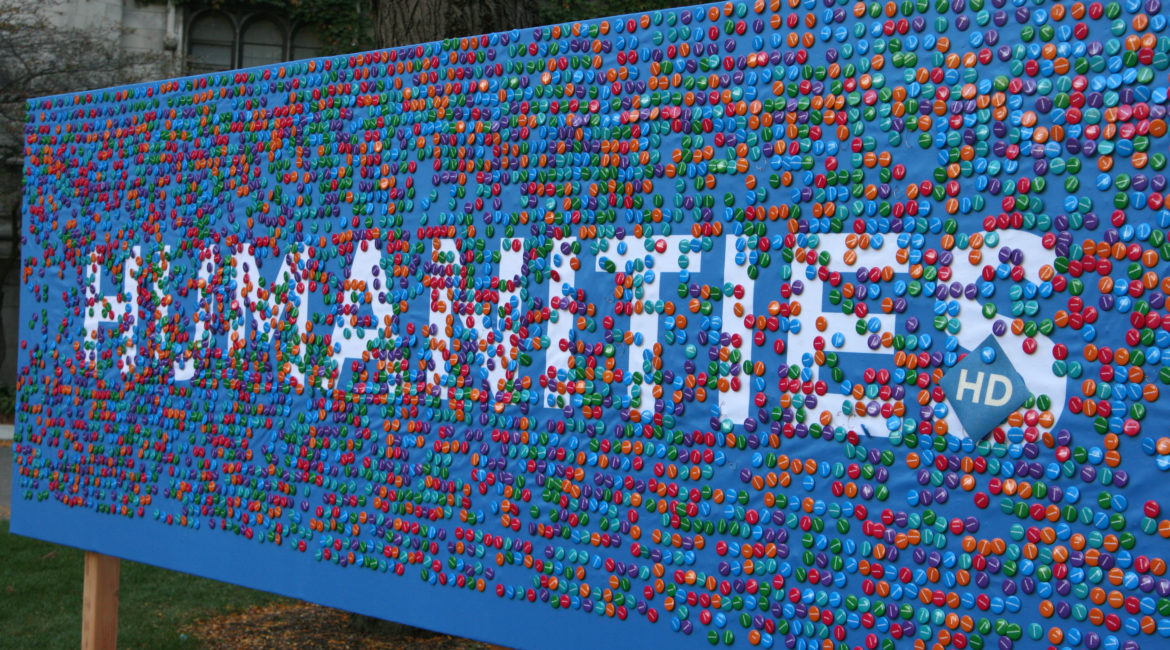For the past several weeks, I have been researching augmented reality with the aim of identifying some of its distinguishing features—“distinguishing” being the operative and tricky word here.
As I explain in a previous blog post, augmented reality seems initially to be easily defined and distinguished from similar concepts, such as virtual reality; in general, this distinction tends to sound a lot like this one that Katerina Roukounaki offers: “Augmented Reality (AR) is about overlaying pieces of a virtual world over the real world (in contrast to Virtual Reality (VR) that is about replacing the real world with a virtual one).” However, closer engagement with materials about augmented reality quickly leads to some confusion about what precisely it is and does that similar concepts like virtual reality do not.
Again, I’m perfectly fine with the messiness that surrounds this concept. My personal motive for teasing out these distinctions is that I will be building a website this semester that will house my project group’s research, and ideally I want this website to feature some creative nods to augmented reality. To achieve this, I need flexibility from both the materials and the concepts involved in this project. The more possibilities with which I can play, the better.
In her article “ ‘This Is Why We Fight’: Defining the Values of the Digital Humanities,” Lisa Spiro says, “For the digital humanities community, experimentation suggests not only a method of testing ideas and creating knowledge but also its engagement in transforming traditional approaches to teaching and research. ‘Experiment’ belongs in a constellation of terms such as curiosity, play, exploration, and do-it-yourself” (Spiro). This is precisely what I am striving to do as I apply what I read about augmented reality to my effort to make a website about it.
What does this mean exactly? It means that I am drawing on everything that I’ve learned about rhetoric, the digital humanities, augmented reality, and various coding languages in order to create a website that plays with the relationship between them. Will I run into some trouble along the way? Probably. Coding is certainly not my forte, but that’s okay. I am trying, as best I can, to productively experiment with the very entities that I analyze. As the numerous reflections about these aforementioned areas suggest, such experimentation means that, even if it gets a little messy, I’m going to be right on track.





